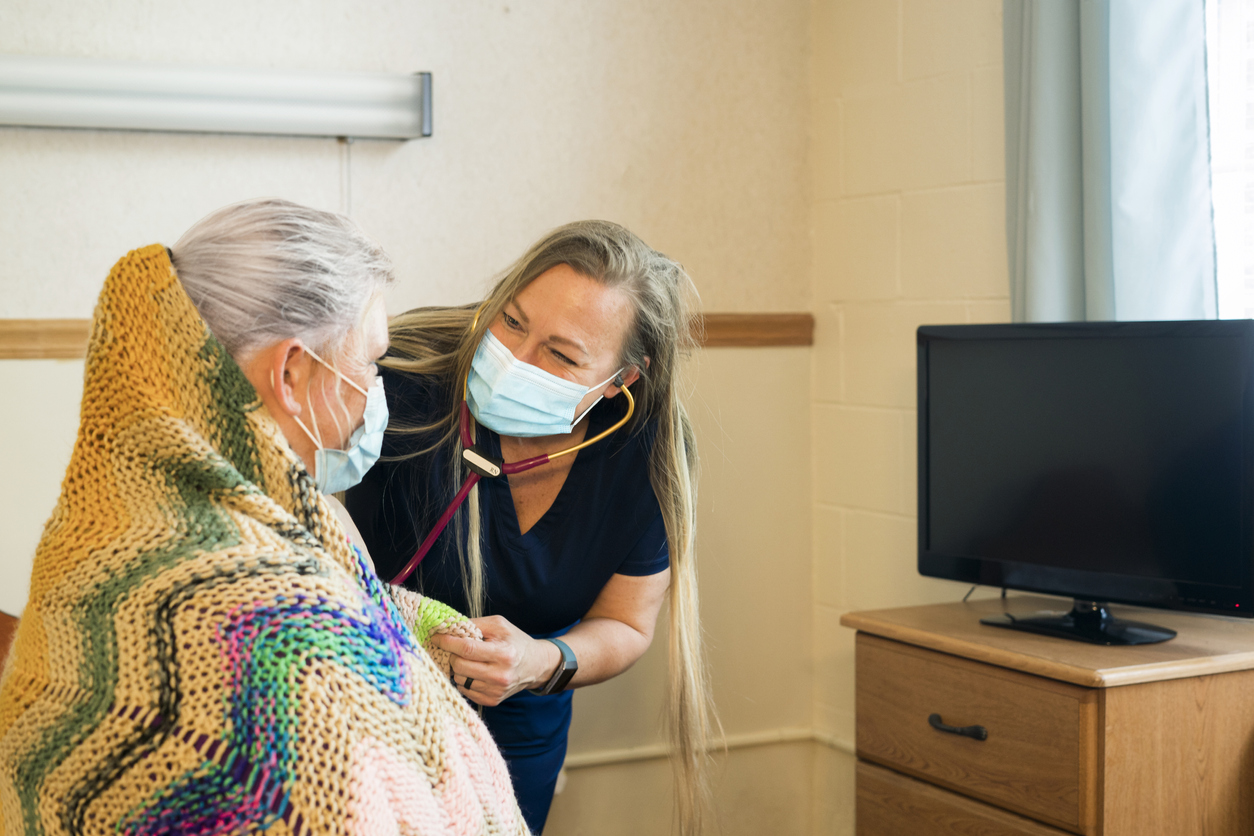When thinking about nursing homes, most people’s thoughts turn to the caregiving staff in these facilities. Caregivers are the core of nursing home operations, but they are not the only individuals tasked with providing care and support for nursing home residents. There are myriad nursing home staff roles in the modern nursing home, and each role requires the appropriate employees. Having the right staff in the right places is key to risk management; just like nursing home coverage from insurance policies, staff members help ensure safe and competent treatment for America’s aging population.
Nursing Home Staffing: An Overview
With the many roles and responsibilities of nursing homes in today’s healthcare environment, it can be valuable to gain an understanding of the staff types present in most facilities. In general, there are three major classifications or groups of employees in a given nursing home:
- Caregivers – sometimes referred to as “direct patient care”, and including nurses, nursing assistants, therapists, and paraprofessionals
- Support Staff – a wide range of employees that include cooks, maintenance, custodial, and janitorial staff
- Administration and Management – includes staff management teams, compliance and regulatory professionals, nursing directors, and facility managers/owners
In much the same way that nursing home coverage provides comprehensive risk protection, the employees of a nursing home – regardless of group — work together to provide outstanding care and support to residents.
Organizational Structure of Caregivers in Nursing Homes
Caregivers are the core of the nursing home model, and provide much of the direct medical treatment and support for facility residents. Typically, the patient care organization is comprised of a Director of Nursing or a nurse manager who supervises a team of caregivers, therapists, and dieticians. The Director of Nursing or nurse manager is usually a registered nurse (RN) or nurse practitioner. Caregivers may be RNs, Licensed Practical Nurses (LPNs) or Licensed Vocational Nurses (LVNs), and/or Certified Nursing Assistants (CNAs). CNAs are sometimes referred to as nursing orderlies, but this is incorrect as CNAs have specialized training and certification to perform their roles.
Within the caregiver ranks are two specialized employee types, dieticians and physical therapists. Federal nursing home laws mandate that a federally-qualified dietician be on staff at every given facility. They may be full- or part-time employees or serve as consultants to facilities. If a dietician is not a full-time employee, the facility must designate a director of food services, who works directly with the dietician. Physical therapists (PTs) handle mobility and exercise programs with residents. Facilities with PTs on staff report greater levels of patient satisfaction and fewer health-related complications, as PTs work directly with residents to improve their function and wellness.
Support Staff: The Unsung Heroes of Nursing Homes
Caregivers are responsible for much of the direct resident care, particularly when it comes to medical treatment. The support staff, however, works behind the scenes to ensure that residents have all of the nutrition, safety, and cleanliness required to thrive. Support personnel may include:
- Groundskeepers
- Janitors
- Cooks and servers
- Maintenance professionals
- Safety mitigation specialists
- Custodians
- Activity directors
- Social and event coordinators
As with caregivers, nursing homes simply cannot function effectively or safely without the tireless efforts of support personnel. These employees perform a valuable risk management role, supplementing the nursing home coverage of insurance policies.
Administration and Management
Nursing homes may be individually owned or part of a larger local, regional, or national healthcare operation. Management of these facilities is crucial, helping to deliver competent and compassionate care and support to America’s seniors. Smaller nursing homes may only have a management team with a handful of employees, while larger facilities may employ the services of many different people, including:
- Billing specialists
- Human resources specialists
- Insurance teams
- Accounting professionals
- Staff and facility managers
Just like support staff, administration and management personnel work behind the scenes and are tasked with keeping the facility running smoothly. They also interface directly with caregivers and support staff for many tasks like scheduling, continuing education and training, payroll, and conflict resolution.
Adequate Staffing: The Key to Risk Management
Nursing home coverage of insurance is a crucial part of risk management. So too is the right staffing levels and types for a given facility. Facility managers must be sure they meet all staffing requirements as mandated by state and federal regulations. Along with nursing home coverage, staff members provide a protective, safe environment for at-risk seniors who depend on nursing homes for care.
About Caitlin Morgan
Caitlin Morgan specializes in insuring assisted living facilities and nursing homes and can assist you in providing insurance and risk management services for this niche market. Give us a call to learn more about our programs at (877) 226-1027.


